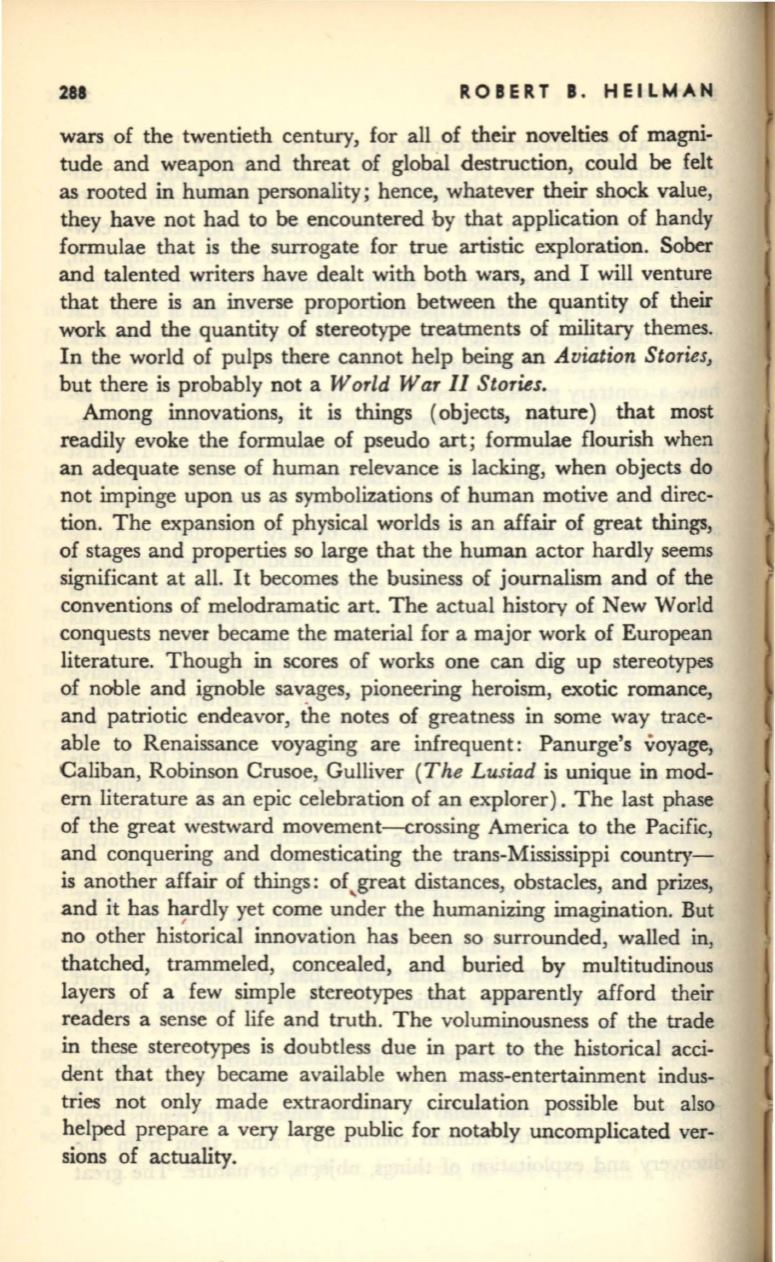
288
ROIIERT II. HEIUAAN
wars of the twentieth century, for all of their novelties of magni–
tude and weapon and threat of global destruction, could
be
felt
as rooted in human personality; hence, whatever their shock value,
they have not had to be encountered by that application of bandy
formulae that is the surrogate for true artistic exploration. Sober
and talented writers have dealt with both wars, and I will venture
that there is an inverse proportion between the quantity of their
work and the quantity of stereotype treatments of military themes.
In the world of pulps there cannot help being an
Aviation Stories,
but there is probably not a
World WaT II Stories.
Among innovations, it is things (objects, nature) that most
readily evoke the formulae of pseudo art; formulae flourish when
an adequate sense of human relevance is lacking, when objects do
not impinge upon us as symbolizations of human motive and direc–
tion. The expansion of physical worlds is an affair of great things,
of stages and properties so large that the human actor hardly seems
significant at all. It becomes the business of journalism and of the
conventions of melodramatic art. The actual history of New World
conquests never became the material for a major work of European
literature. Though in scores of works one can dig up stereotypes
of noble and ignoble savages, pioneering heroism, exotic romance,
and patriotic endeavor, the notes of greatness in some way trace–
able to Renaissance voyaging are infrequent: Panurge's voyage,
Caliban, Robinson Crusoe, Gulliver
(The Lusiad
is unique in mod–
em literature as an epic celebration of an explorer). The last phase
of the great westward movement-crossing America to the Pacific,
and conquering and domesticating the trans-Mississippi country–
is another affair of things: of..great distances, obstacles, and prizes,
and it has
h~rdly
yet come under the humanizing imagination. But
no other historical innovation has been so surrounded, walled
in,
thatched, trammeled, concealed, and buried by multitudinous
layers of a few simple stereotypes that apparently afford their
readers a sense of life and truth. The voluminousness of the trade
in these stereotypes is doubtless due in part to the historical acci–
dent that they became available when mass-entertainment indus–
tries not only made extraordinary circulation possible but also
helped prepare a very large public for notably uncomplicated ver–
sions of actuality.


